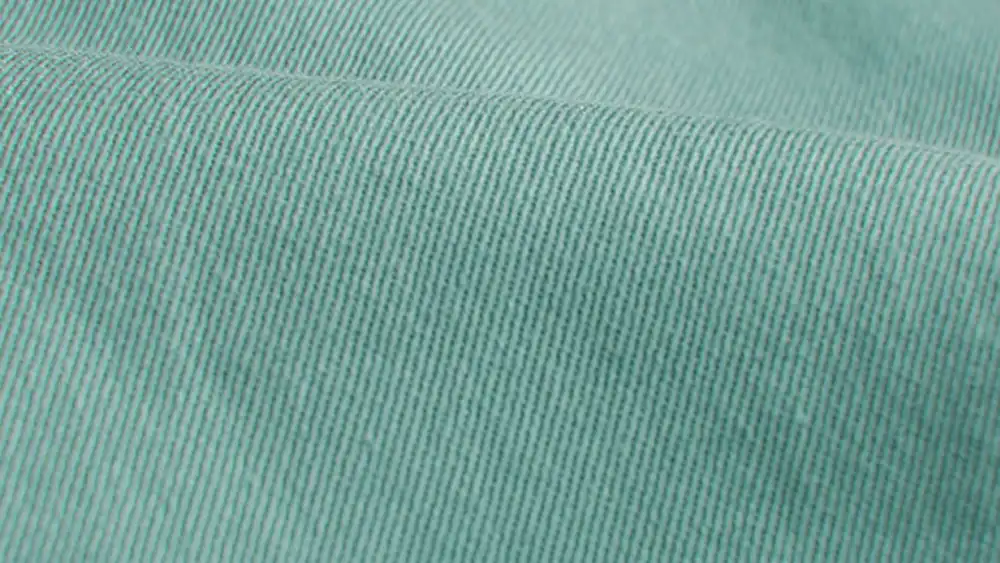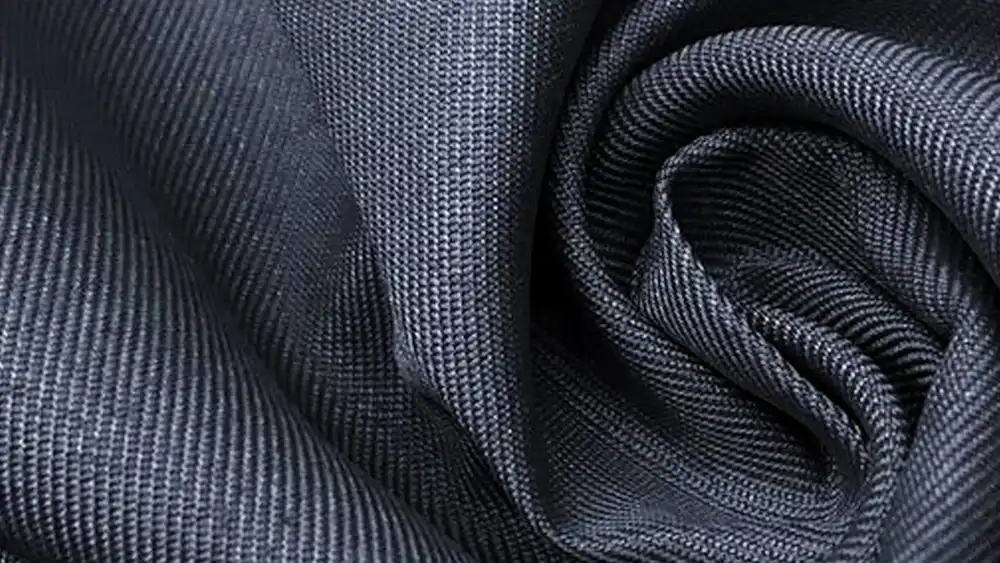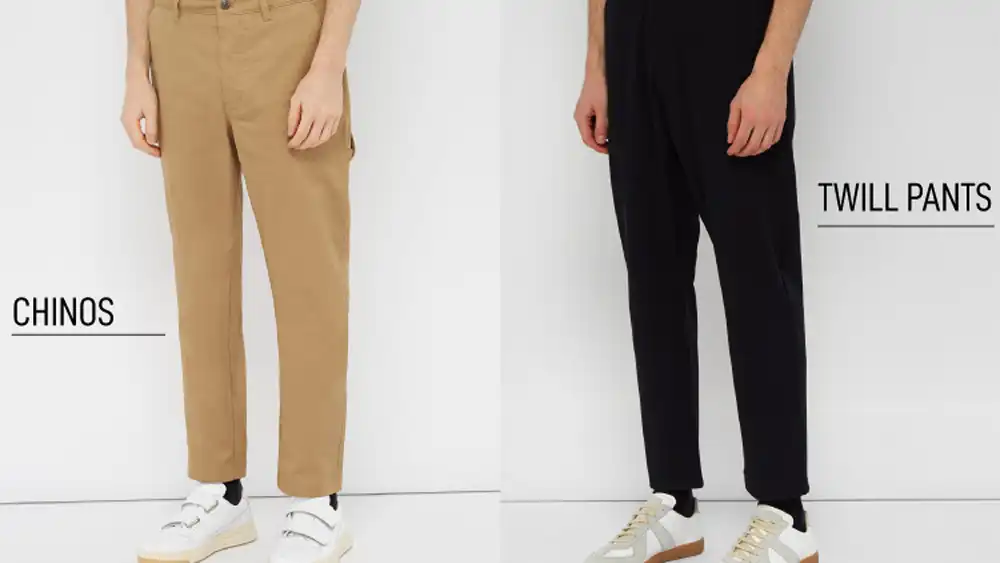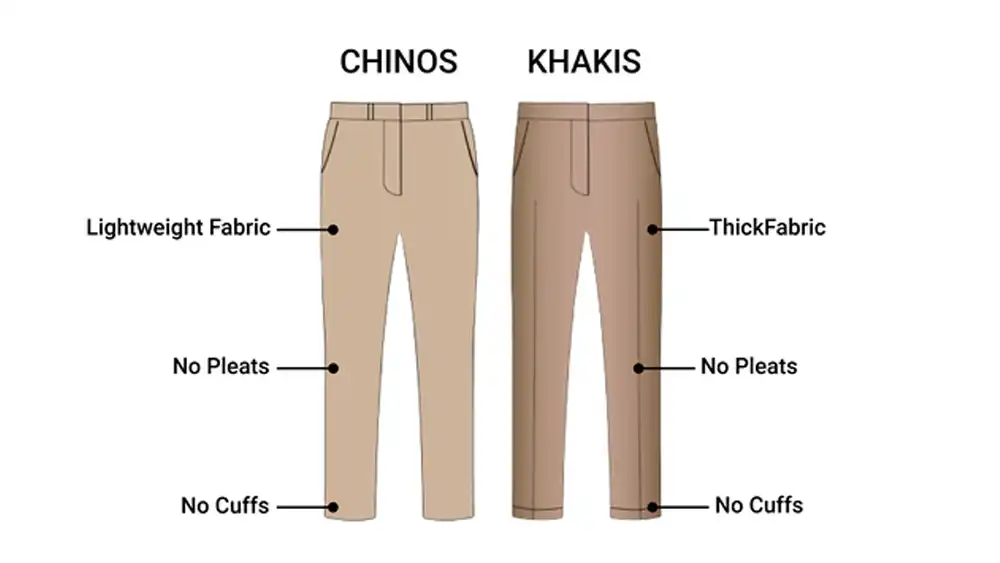Choosing the right fabric is crucial, whether you’re crafting clothing, upholstery, or accessories. Chino and twill fabrics are both popular choices, each with its unique characteristics and applications.
In this guide, we’ll delve into the specifics of Chino vs Twill Fabric, exploring their differences, similarities, and the best scenarios for using each type.
What Is Chino Fabric: A Versatile Classic

Chino fabric is a type of twill fabric known for its durability, versatility, and comfortable feel. It is woven in a twill pattern, characterized by diagonal lines on the surface. Chino fabric is typically made from 100% cotton or a cotton blend, offering breathability and ease of care.
Chino fabric is renowned for its softness and smooth texture, making it ideal for casual and semi-formal clothing. Its crisp appearance and medium weight make it suitable for trousers, shorts, skirts, and jackets. Chino fabric is available in various colors and finishes, allowing for a wide range of style options.
What Is Twill Fabric: The Epitome of Durability

Twill fabric is characterized by its distinct diagonal weave pattern, created by interlacing yarns in a specific manner. This weaving technique gives twill fabric its strength, durability, and visual appeal. Twill fabric can be made from various fibers, including cotton, polyester, wool, and blends.
Twill fabric is highly versatile and finds applications in apparel, home furnishings, and industrial settings. Its tight weave makes it resistant to wrinkles and creases, while its durability ensures longevity. Twill fabric is commonly used for jeans, workwear, uniforms, upholstery, and accessories.
Chino Vs Twill Fabric

While both Chino and twill fabrics share some similarities due to their twill weave structure, they also have distinct characteristics that set them apart:
1. Texture and Appearance
- Chino Fabric: Smooth texture, slight sheen, and a crisp finish.
- Twill Fabric: Diagonal weave pattern, sturdy appearance, and varied finishes.
2. Weight and Drape
- Chino Fabric: Medium weight, drapes well, and retains shape.
- Twill Fabric: Medium to heavy weight, structured drape, and minimal stretch.
3. Breathability and Comfort
- Chino Fabric: Lightweight and breathable, ideal for warm weather.
- Twill Fabric: Durable and substantial, suitable for cooler climates and rugged use.
4. Applications
- Chino Fabric: Casual and semi-formal clothing, including trousers, shorts, and skirts.
- Twill Fabric: Jeans, workwear, uniforms, upholstery, and heavy-duty apparel.
Exploring Further: Chino vs Twill Fabric
To further illustrate the differences between Chino and twill fabrics, let’s compare them in a compression table:
| Aspect | Chino Fabric | Twill Fabric |
|---|---|---|
| Weave Pattern | Twill weave with diagonal lines | Twill weave with pronounced diagonal pattern |
| Texture | Smooth with a slight sheen | Sturdy with a visible diagonal texture |
| Weight | Medium | Medium to heavy |
| Breathability | Lightweight and breathable | Less breathable but highly durable |
| Comfort | Soft and comfortable | Sturdy and rugged, suitable for heavy use |
| Applications | Casual and semi-formal clothing | Jeans, workwear, uniforms, and upholstery |
This compression table provides a quick overview of the key differences between Chino and twill fabrics, helping you make an informed decision based on your specific requirements.
Chino vs Khaki vs Twill

Khaki Fabric: Casual Comfort with a Distinct Hue
Khaki fabric, often confused with Chino due to its similar appearance, refers to the distinctive tan color rather than a specific weave or fabric type. Khaki can be made from various materials, including cotton, polyester, and blends.
It shares similarities with Chino in terms of texture and weight but is distinguished by its characteristic khaki color, making it a popular choice for casual wear and military uniforms.
While Chino, Khaki, and Twill fabrics share some similarities, they also have distinct characteristics that set them apart:
| Aspect | Chino Fabric | Khaki Fabric | Twill Fabric |
|---|---|---|---|
| Weave Pattern | Twill weave with diagonal lines | Varied weaves, often twill or plain | Twill weave with pronounced diagonal pattern |
| Texture | Smooth with a slight sheen | Soft and comfortable with a subtle texture | Sturdy with a visible diagonal texture |
| Color | Various colors available | Typically tan or beige | Varied colors and finishes |
| Weight | Medium | Medium to heavyweight | Medium to heavy |
| Breathability | Lightweight and breathable | Breathable and comfortable | Less breathable but highly durable |
| Applications | Casual and semi-formal clothing | Casual wear, military uniforms | Jeans, workwear, uniforms, and upholstery |
Understanding the differences between Chino, Khaki, and Twill fabrics empowers you to make informed decisions based on your specific needs and preferences. Whether you prioritize comfort, durability, or style, each fabric type offers unique benefits for various applications. By considering factors such as texture, color, and weight, you can confidently select the perfect fabric for your next project.
FAQs
Can Chino fabric be used for formal wear?
Yes, Chino fabric can be tailored for formal wear, especially when blended with other fibers like polyester or wool for added structure and refinement.
Is twill fabric suitable for upholstery?
Absolutely! Twill fabric’s durability and resistance to wrinkles make it an excellent choice for upholstery projects, providing both style and longevity.
Which fabric is more breathable, Chino, or twill?
Chino fabric tends to be more breathable due to its lighter weight and softer texture, making it ideal for warmer climates or seasons.
Can twill fabric be dyed easily?
Yes, twill fabric’s weave structure allows for even dye absorption, making it suitable for a wide range of color treatments and finishes.
Are there eco-friendly options available for both Chino and twill fabrics?
Yes, manufacturers offer organic cotton options for both Chino and twill fabrics, reducing environmental impact and promoting sustainability.
Can Chino and twill fabrics be blended with other materials?
Certainly! Both Chino and twill fabrics can be blended with various fibers like polyester, spandex, or bamboo for enhanced performance and versatility.
Conclusion: Making Informed Choices
Understanding the differences between Chino and twill fabrics empowers you to make informed decisions based on your specific needs and preferences. Whether you prioritize comfort, durability, or style, both fabric types offer unique benefits for various applications. By considering factors such as texture, weight, and breathability, you can confidently select the perfect fabric for your next project.
